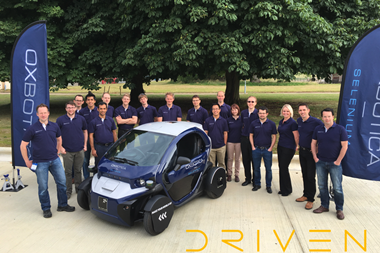The future of many vehicles is driverless. While the safety advantages are vast, so are the risk concerns

Globally, nearly 1.3 million people die in road crashes each year; on average, 3,287 deaths a day. Another 20-50 million are injured or disabled, according to the Association for Safe International Road Travel.
Despite efforts to reduce these figures, such devastation has become a regular part of life.
But by sensing their environment and navigating without human input, autonomous cars, planes and ships could neutralise the danger.
“Autonomous vehicles have the potential to make transportation safer, faster and more efficient,” says Roy Wilmoth, AIG’s head of casualty, Asia-Pacific.
“While the benefits outweigh the risks, risk managers need to be asking how autonomous vehicles will impact cyber, liability and privacy risks.”
Wilmoth says at this stage, autonomous vehicles raise more questions than answers. “Regulators and the courts have yet to weigh in, but it’s not unreasonable to assume that liability may eventually shift from vehicle operators to manufacturers.”
The most effective way for risk managers to mitigate the risks created by new technologies such as these, says Wilmoth, is for them to connect with their R&D departments early in the development process.
“As a result, risk managers will be able to address risks in the design phase and possess enough information to ensure that they purchase adequate insurance coverage,” he says.
Peter Jackson, chief executive of Lockton in Singapore, says: “As the vehicles are totally computer- controlled, with no local manual intervention, you’re completely in the hands of the software.
“Cyber risk prevention is critical so that these cars, planes, ships and their contents arrive safely where you want them to.”
It’s difficult to plan for what could go wrong, he adds, as the technology is not fully tested. “Malware could be embedded and theft going on for months before it’s noticed.”
Wilmoth agrees that modern vehicles are already increasingly vulnerable to cyber attacks, from tracking their location to disabling steering and braking. “Cyber risks will grow exponentially as vehicles rely more on connected technologies to operate autonomously,” he says. “Risk managers will need to help vehicle manufacturers design vehicles that are not only safe in a collision, but are secure from hackers too.”
Liability issues will become increasingly important, he says. “Risk managers should be asking questions like: ‘Who is responsible if an autonomous vehicle injures a pedestrian while avoiding another vehicle?’ or ‘Who is to blame if a proximity sensor fails, causing an accident?’”
Wilmouth notes the issues manufacturers have to contend with. “Two liability scenarios are currently playing out. For example, Tesla states that the drivers of its vehicles are responsible for accidents while using autonomous features. On the other hand, Volvo has stated that it will take full responsibility for accidents involving its autonomous vehicles.”
Ryan Tan, head of strategy and enterprise risk management at Singaporean public transport operator SMRT Corporation, says a key risk is around introducing autonomous vehicles into the regular vehicle environment. “These [risks] could of course be mitigated through the right measures,” he says, “such as dedicated lanes, adequate education of all stakeholders, including the public, plus pilot periods to socialise all actors to autonomous vehicles-related variables before full implementation.”
Tan says risk managers need to understand current and future technology, looking at projects in the pipeline and how quickly they will come to market. “This would allow for an adequate assessment of the velocity of disruption.” Regulatory bodies that govern autonomous vehicles will play a key role in mitigating risks, he adds. “What sort of policies are they going to set up, and when are they going to do so in relation to the fast-evolving technology curve?”.
Jackson says risk managers will need to look at business continuity planning in a different way. “What happens if the autonomous system fails, can you revert to manually operated? Risk managers will need to map the supply chain of hardware and software to manage the autonomous vehicles to understand each party’s role and how they manage risk.”
He adds that it will be important to learn from previous experiences, both in the automation sphere and in terms of taking business activities online or becoming internet and cloud-enabled.
“We must also learn from other industries, such as how the military manage drones and how metro networks manage driverless trains. Close liaison with insurers will be needed to help them understand the risks and how they are being managed.”




















No comments yet